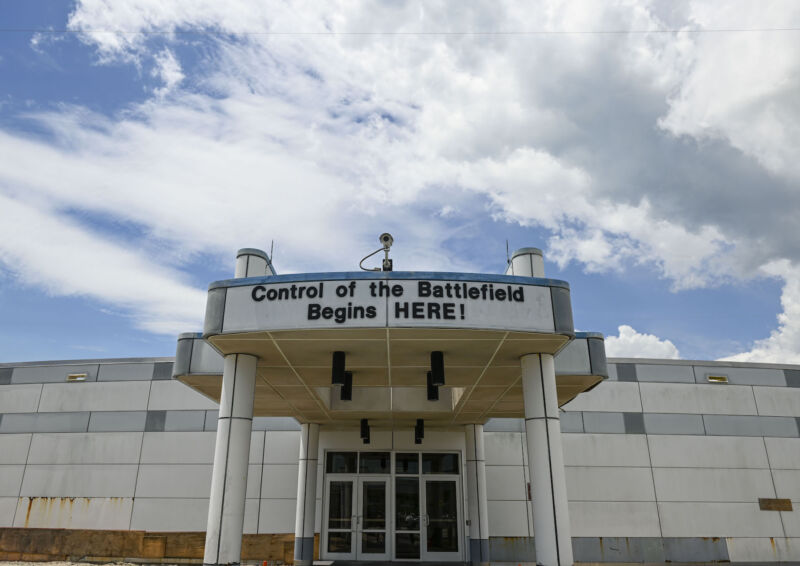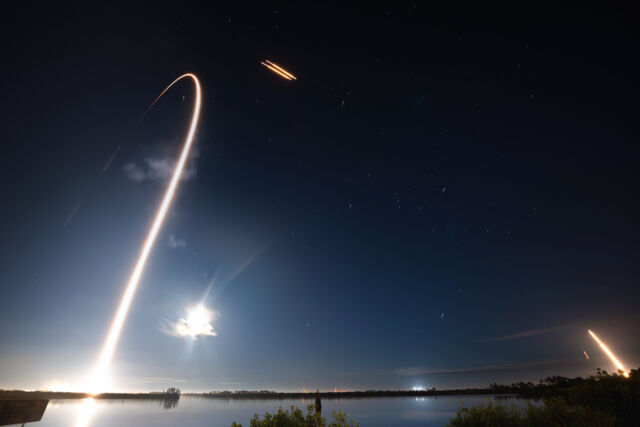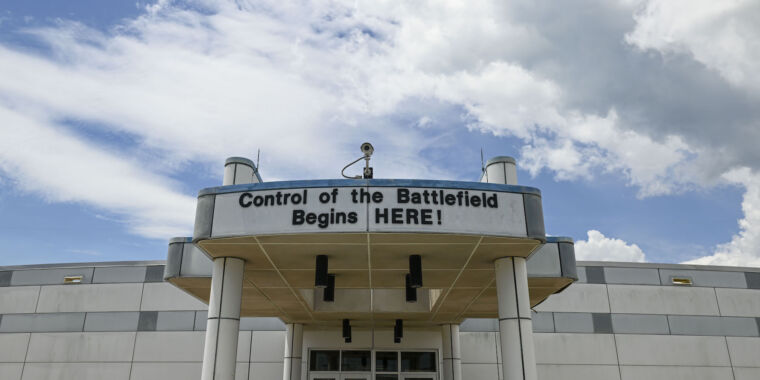The Space Force is changing the way it thinks about spaceports
Demanding —
There’s not much available real estate to grow Cape Canaveral’s launch capacity.

Enlarge / The Morrell Operations Center at Cape Canaveral Space Force Station, Florida.
A lot goes into a successful rocket launch. It’s not just reliable engines, computers, and sophisticated guidance algorithms. There’s also the launch pad, and perhaps even more of an afterthought to casual observers, the roads, bridges, pipelines, and electrical infrastructure required to keep a spaceport humming.
Brig. Gen. Kristin Panzenhagen, commander of the Space Force’s Eastern Range at Cape Canaveral Space Force Station in Florida, calls this the “non-sexy stuff that we can’t launch without.” Much of the ground infrastructure at Cape Canaveral and Vandenberg Space Force Base in California, the military’s other launch range, is antiquated and needs upgrades or expansion.
“Things like roads, bridges, even just the entry into the base, the gate, communications infrastructure, power, we’re looking at overhauling and modernizing all of that because we really haven’t done a tech refresh on all of that in a very long time, at least 20 years, if not more,” said Col. James Horne, deputy director for the Space Force’s assured access to space directorate.
Getting a congressional appropriation for new rocket or spacecraft development, research into advanced technology, or military pay raises has generally been easier than securing funds for military construction projects.
“Trying to do all those upgrades on just our annual budget is not possible,” Panzenhagen said earlier his week in a presentation to the National Space Club Florida Committee.
Charging ahead
The Biden administration is requesting $1.3 billion over the next five years to revamp infrastructure at the Space Force’s ranges in Florida and California. According to Panzenhagen, one of the first projects will be an upgrade to the airfield at Cape Canaveral, where the military regularly delivers satellites and other equipment to the launch site.
But this funding won’t be enough for Cape Canaveral and Vandenberg to meet the Space Force’s projected launch demand fully. Last year, there were 72 orbital launch attempts from Florida and 30 launches from California.
“I would anticipate we’re going to do over 100 launches from the Cape this year,” Panzenhagen said. “And that puts a strain on a lot of our workforce, so we are doing process things to try to operate more smartly.”
SpaceX will launch most of these missions, with Falcon 9 launch demand driven by expanding the company’s Starlink broadband network. United Launch Alliance plans as many as 16 rocket launches this year, all from Cape Canaveral, and Blue Origin could launch its first heavy-lift New Glenn rocket from Florida by the end of 2024. SpaceX plans to launch around 50 missions from California next year; Firefly Aerospace could launch a handful of flights there, too.

Enlarge / This long exposure photo shows a SpaceX Falcon Heavy rocket streaking into space from NASA’s Kennedy Space Center in Florida. A few minutes later, the rocket’s side boosters returned to land at Cape Canaveral Space Force Station a few miles away.
There has been a significant uptick in launch cadence at Cape Canaveral. In 2008, there were only seven launches from the Florida spaceport. Since SpaceX started launching its Falcon 9 rocket in 2010, the launch cadence in Florida has been on a steady rise.
“This is not a hard limit, but I think at the Cape, we could probably push through somewhere on the order of 150 launches per year if we did nothing,” Horne told Ars in a recent interview. “And then probably 75 or so per year from Vandenberg. Everything we’re doing is continuing to improve that ability so that we’re not in the way. So whenever they say they need to go, we say yes.”
The Space Force provides security, weather forecasting, telemetry, and safety oversight services for all launches from Cape Canaveral and Vandenberg. The launch ranges in Florida and California are primarily responsible for ensuring the US military has an always-on capability to launch critical national security satellites. But the majority of launches from the military ranges are commercial missions.
The Space Force is changing the way it thinks about spaceports Read More »
